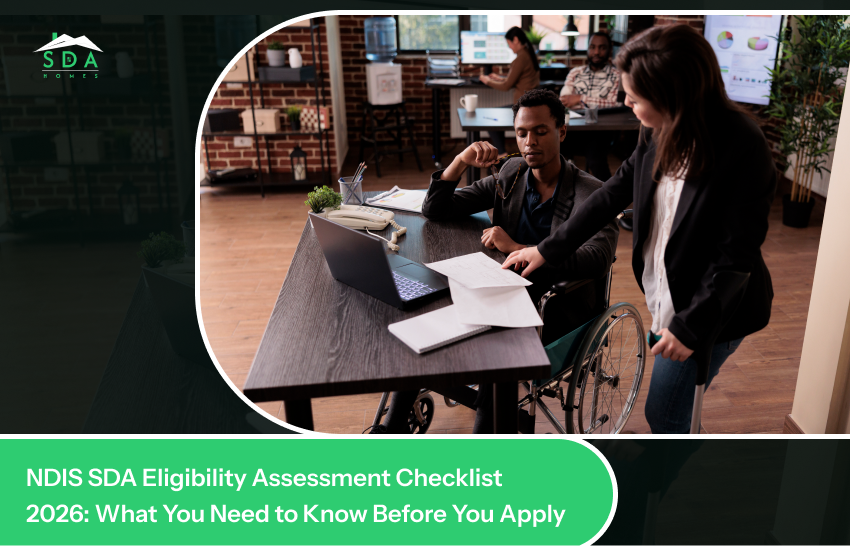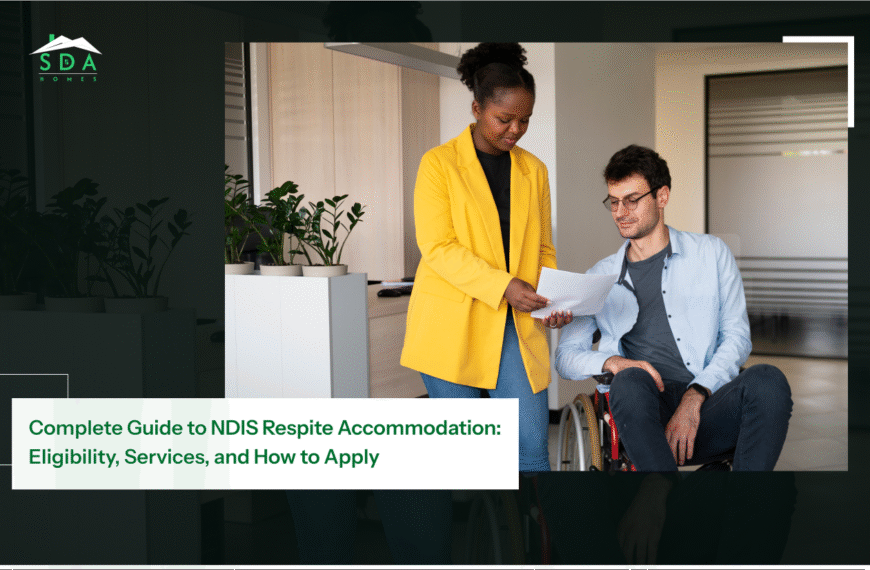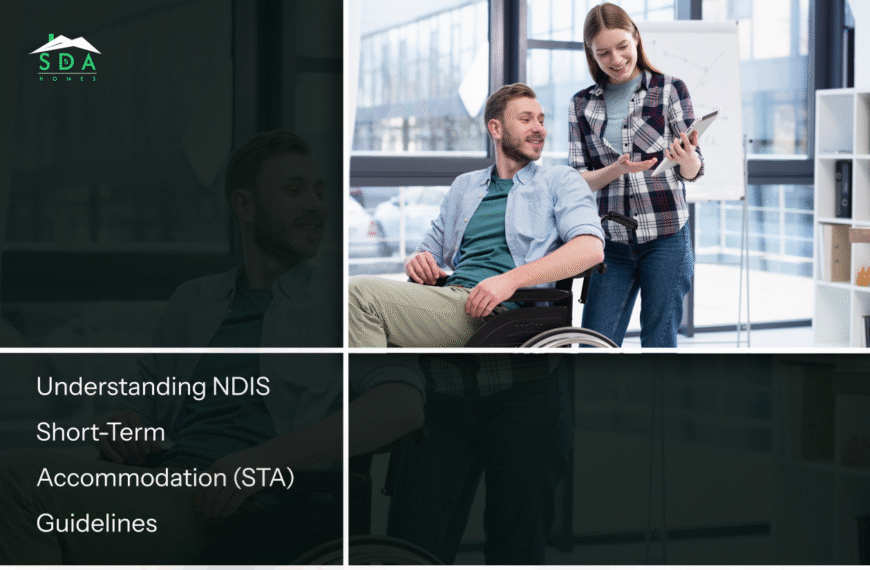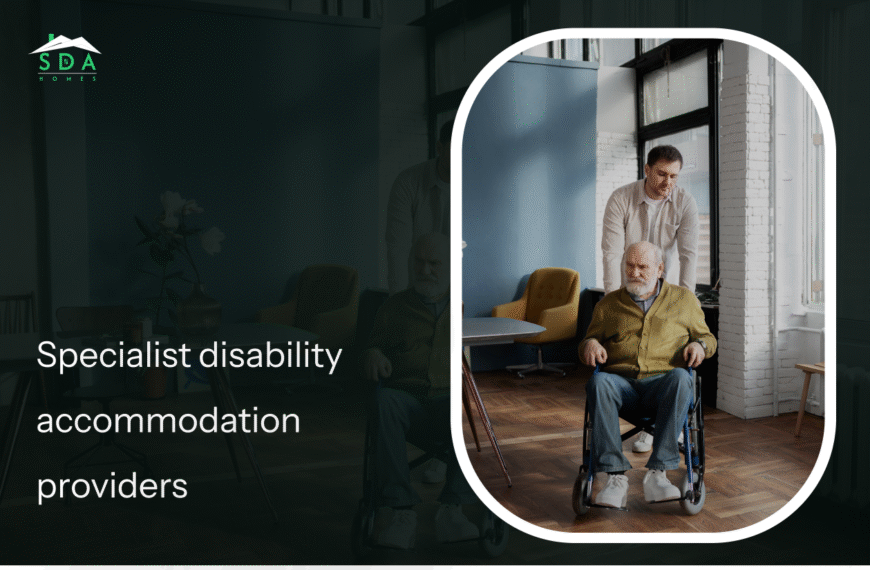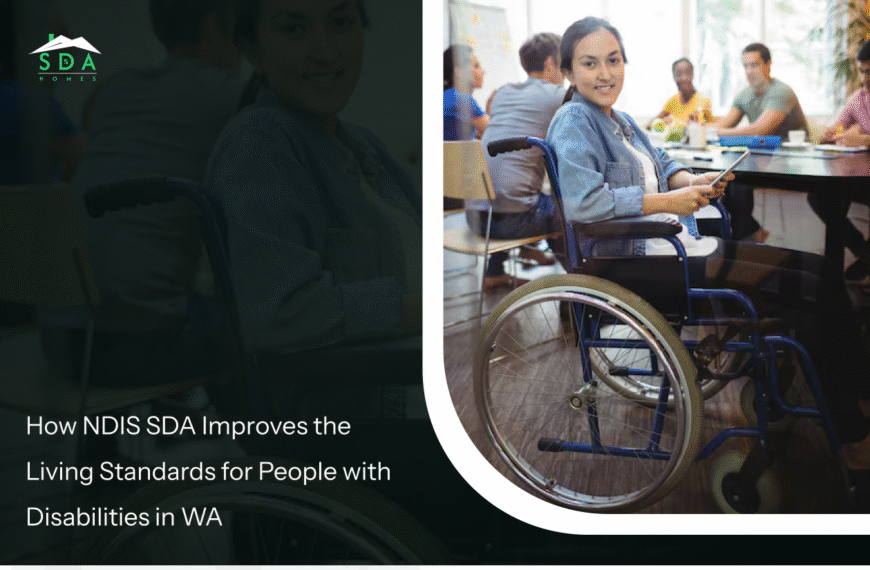Specialist Disability Accommodation
Introduction
Specialist Disability Accommodation Rules (SDA) helps Australians with significant disabilities live more independently. The NDIS SDA rules explain who can access this support, what kind of homes count as SDA, and how you can apply for funding under the latest 2025 guidelines. The process is clearer than ever, making things easier for both participants and providers. Hence, understanding SDA rules and the application process is essential.
So, if you’re a participant, career, or provider in Australia, ready to navigate specialist housing in your NDIS plan, this simple guide is for you.
What Is Specialist Disability Accommodation (SDA)?
SDA stands for Specialist Disability Accommodation. Builders construct or modify these homes for people who need more physical support throughout their day. Most of these specialised properties include wide hallways, ramps, strong walls, and smart technology to make daily life easier. These types of homes fall under the National Disability Insurance Scheme, or NDIS. The main aim is to help people live more independently, no matter their challenges.
Not every NDIS participant is meant to get SDA. By keeping strict standards, SDA makes sure the right homes get to the right people. In 2025, newer SDA design standards ensure more comfort, safety, and choice for Australians living with disability.
Who Is Eligible for Specialist Disability Accommodation Australia?
SDA isn’t for every participant, and the NDIS sets clear rules about who qualifies. Here’s a quick checklist:
- You must have an NDIS plan.
- Your disability causes extreme difficulties in daily life, even with technology or home changes.
- You need a very high level of support from another person, not just from equipment.
- A thorough assessment by health professionals will be needed as proof.
This assessment usually involves reports from allied health professionals and a review of your needs. The process checks that Specialist Disability Accommodation Rules is the only way to help you live as safely and independently as possible. If you meet all these points, you can talk to your NDIS planner about next steps.
Key Specialist Disability Accommodation Rules and Recent Updates
The Specialist Disability Accommodation Rules program in 2025 are a little clearer than before, but they still cover everything well. Remember some important things here:
- Any SDA house provider or supplier must officially register with the NDIS.
- The properties must complete the strict design and size standards set in the SDA design standard.
There are specific rules about how many people can live in each hometo make sure it’s not too crowded.- Only certain types of homes qualify as SDA, such as apartments, houses, or group homes modified for individuals with special needs.
- Funding gets reviewed regularly and is linked to your NDIS plan. New rules aim to speed up the application and review process.
- Providers must follow compliance and safety rules, and homes need up-to-date emergency plans.
Recent changes now allow more people to qualify, lift accessibility standards, and offer clearer guidelines for both providers and participants. The NDIA enrolls each dwelling and centrally manages Specialist Disability Accommodation payments and price limits to ensure fairness.
Step-by-Step SDA Application Process
1. Set a Housing Goal in Your NDIS Plan
Talk with your NDIS planner and explain why you need SDA. Be clear about your goals, what daily challenges you face, and how better housing will help.
2. Gather the Right Documents
You’ll need:
- A Functional Capacity Report from an allied health professional (such as an occupational therapist).
- Supporting letters from your psychologist.
- The “Home and Living Supports” form explains your specific needs.
- A personal housing statement explains why your needs cannot be met through regular community housing or minor home modifications.
Make sure everything is recent and spells out your needs clearly.
3. Submit Your Application
Once the paperwork is prepared and complete, submit it through the NDIS portal. Double-check for missing sections, as blank columns or incomplete applications can cause delays.
4. Assessment and Decision
The NDIS will then review the details. If not satisfied or required, they’ll ask for additional information or clarification from you. This usually takes a few weeks to finish.
Contact your NDIS planner for updates.
Important Tips:
- Take your time with the forms; rushed and wrong answers can cause problems later.
- If you’re stuck, reach out to a support coordinator or advocacy group.
- Keep copies of everything you submit.
The NDIS reviews your application and informs you if it’s approved, allowing you to begin searching for the right SDA home.
5. What Happens Post Application Submission?
Once the NDIS has made a decision, you will have three scenarios in front of you to deal with your application:
- If your application is approved: Your NDIS plan will be updated to include funding for the SDA. After that, you can start searching for a suitable property, and your planner or provider can offer assistance with this.
- If your application isn’t approved: Don’t worry, you have the right to request a review. You can also provide any extra information that might help your case.
- Whatever the outcome: The notice you receive will clearly explain the decision and outline your rights.
Participants pay rent and other everyday costs, such as utilities, are not covered by SDA funding.
Pro Tips for Participants & Providers
- Always save copies of your forms and reports, as you may need them later.
- Communicate early and openly with your NDIS planner.
- Should something be unclear to you, don’t hesitate to ask questions.
- Update your health assessments regularly to ensure you have the most current information.
- If someone you know has gone through the process, ask them for some real-life advice.
For providers:
- Check out to make sure you are aware of and working to the latest NDIS guidelines and building standards.
- Ensure that every property enrolment is correct in detail and accurate.
Final Takeaway
Navigating Specialist Disability Accommodation rules and applications is easier when you focus and take it one step at a time. For the most current support, check the official NDIS website and talk with a trusted provider like SDA Homes. Rules can vary slightly between Australian states, so local advice is always helpful. Take the next step with clarity, strength, and personal growth!
SDA Rules 2025 FAQs
Q1: Who can help with my SDA application?
Ans: Planning manager, support coordinator, and advocacy services can guide you from beginning to end.
Q2: How long does it take to make decisions?
Ans: If your paperwork is completed, it often takes a few weeks. More complex cases may take longer.
Q3: What supporting evidence is required?
Ans: You will need recent health assessments, clear reports from allied health professionals, and details explaining why SDA is right for you.
Q4: What are the main design categories for SDA homes?
Ans: Homes are designed as: Improved Liveability, Fully Accessible, Robust Construction, or High Physical Support. These categories match different support needs.


